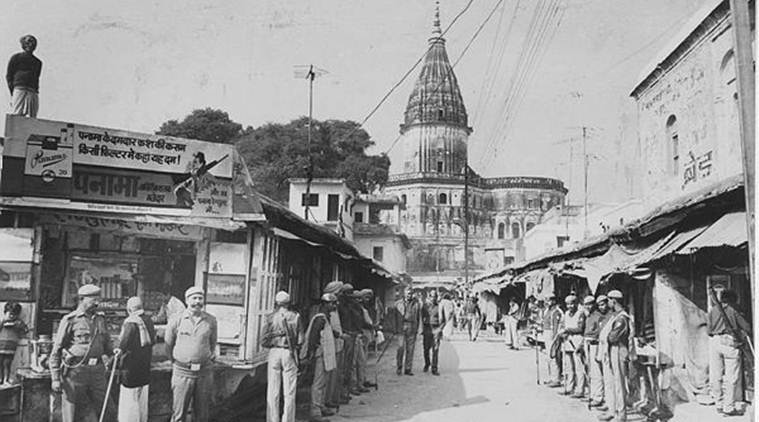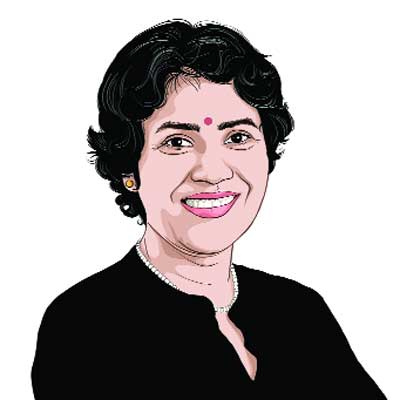The Urdu Press: Ayodhya truths
Ayodhya, the RSS chief’s Dussehra address and the BJP’s utterances on Ram Mandir have been discussed extensively in the Urdu press.

Rashtriya Sahara, in an editorial on October 27 interprets statements by BJP and RSS leaders on Ayodhya as a “dhamki” or threat. (File)
The Supreme Court deferral of the Ramjanmabhoomi case to January 2019 is referred to by Akhbaar-e-Mashriq on October 31 as a wonderful example of foresight and wisdom (daanishmandi).
But before that, Ayodhya, the RSS chief’s Dussehra address and the BJP’s utterances on Ram Mandir have been discussed extensively in the Urdu press.
Etemaad, the Hyderabad-based daily of the AIMIM in an editorial on October 20 writes: “The RSS unveils its true face at the Dussehra address of Mohan Bhagwat. The construction of the Ram mandir is its sole purpose now.” The wide-ranging editorial says that “the RSS, which directs this government, has proved that it does not believe in the law of the land. It is an open secret that they bring up the Ram mandir when close to elections.” It goes onto say: “After changing the name of Allahabad, now Faizabad is on the agenda. In order to remove the stain of Gandhi’s murder, they want to turn Deen Dayal Upadhyaya into a national hero, push Muslims to the margin and reduce the power of their vote and give them a sense that they are second-class citizens. That takes away obstacles to making this a Hindu Rashtra. Now people like Gauri Lankesh and M M Kalburgi and leftists are said to be equal to Naxalites. This is a lie.”
Rashtriya Sahara, in an editorial on October 27 interprets statements by BJP and RSS leaders on Ayodhya as a “dhamki” or threat. It writes, “If the Centre had actually made any progress on development and fulfilled its promises, then the NDA would have won the next election. But they have done nothing except spread communal hatred. Now, people have understood that we need fraternity and amity. Until there is harmony and brotherhood, no country can hope to reach the zenith. We hope the BJP would not adopt violent means to come to power, instead it would choose the path to harmony.”
CBI drama
Urdu broadsheets this week have been concerned with “important democratic institutions being destroyed” by the Modi government (Munsif, October 30) and the “attack (yalghaar)” on them (Etemaad, October 29) in the light of affairs around the Central Bureau of Investigation (CBI) and the Reserve Bank of India. But the CBI and government’s ties have received special attention.
Munsif on October 26 writes of the CBI affair as being one where “matters are not as simple as it seem”. In a hard-hitting editorial, the daily speaks of how the “media was first trapped in the web spun by the government of a departmental squabble. We too in our earlier editorials fell into the trap. But we have now realised after the work of investigative journalists” that on the pretext of infighting, Modi is trying to place “puppets in the agency,” his “noor-e-nazar”, as they term Rakesh Asthana, the CBI special director. The editorial takes a dim view of the Central Vigilance Commissioner as well. It says: “if Modi’s past is seen, he has never acted against takers of bribes, but gone after those who have tried to crack down on bribe-givers.”
Akhbar-e-Mashriq in its October 28 editorial calls the CBI situation “farcical”. If the Asthana-Verma tension is a year old, why did the government not act? It terms “India’s biggest investigative agency as the Central Bureau of Intrigue… now it is a conspiracy spinning machine”. The paper concludes that UPA2 was rejected as it was seen as “paralysed”, now “this government is going the same way and the people will reject it for similar reasons”.
Munsif on October 26 writes of the CBI affair as being one where “matters are not as simple as it seem”. In a hard-hitting editorial, the daily speaks of how the “media was first trapped in the web spun by the government of a departmental squabble. We too in our earlier editorials fell into the trap. But we have now realised after the work of investigative journalists” that on the pretext of infighting, Modi is trying to place “puppets in the agency,” his “noor-e-nazar”, as they term Rakesh Asthana, the CBI special director. The editorial takes a dim view of the Central Vigilance Commissioner as well. It says: “if Modi’s past is seen, he has never acted against takers of bribes, but gone after those who have tried to crack down on bribe-givers.”
Akhbar-e-Mashriq in its October 28 editorial calls the CBI situation “farcical”. If the Asthana-Verma tension is a year old, why did the government not act? It terms “India’s biggest investigative agency as the Central Bureau of Intrigue… now it is a conspiracy spinning machine”. The paper concludes that UPA2 was rejected as it was seen as “paralysed”, now “this government is going the same way and the people will reject it for similar reasons”.
Hashimpura verdict
The Delhi High Court holding 16 Provincial Armed Constabulary (PAC) personnel guilty of killing 38 Muslims at Hashimpura near Meerut in 1987 has evoked strong responses and wide coverage. Inquilab has an editorial on November 1, on how the justice system works — “justice delayed is justice denied”. It emphasises how the rich and powerful, through money and influence, can push their case in court but the powerless and poor often return empty-handed.
Roznama Rashtriya Sahara on the same day, makes a powerful point about this verdict in its editorial: “There are very few such instances in India when PAC personnel and police have got punished for such crimes. Hashimpura now has become a living example (jeeti jaagti misaal) of such instances.” It does, of course, speak of the delay but invokes, “better late than never” and how this will serve as an example and will prevent other such massacres.
Roznama Rashtriya Sahara on the same day, makes a powerful point about this verdict in its editorial: “There are very few such instances in India when PAC personnel and police have got punished for such crimes. Hashimpura now has become a living example (jeeti jaagti misaal) of such instances.” It does, of course, speak of the delay but invokes, “better late than never” and how this will serve as an example and will prevent other such massacres.
Abdus Sattar dead
The eminent fiction writer’s passing at 85 years has been mourned in the Urdu world. Sattar is said to have started a new form — historical novel writing — in Urdu with books like Darashikoh, Ghalib and Khalid bin Waleed and Salahuddin Ayyubi. Inquilab notes in a page one spread on October 30, that just a brief glance at his work was a window to his unique abilities and creativity.
For all the latest Opinion News, download Indian Express App
More From Seema Chishti
- In light of Hashimpura, recalling PAC, UP’s controversial armed police forceUP PAC is one of several State Armed Police Forces who operate in addition to the regular state police, and are equipped to handle severe…
- Plea against Rakesh Asthana went to three SC benches before being dismissedThe appointment of CBI Special Director Rakesh Asthana, who was sent by the government on administrative leave along with CBI Director Alok Verma, had been…
- Explained: What’s in Allahabad’s nameUttar Pradesh CM Yogi Adityanath wants to rename it Prayagraj. The historical context. ..






































No hay comentarios:
Publicar un comentario